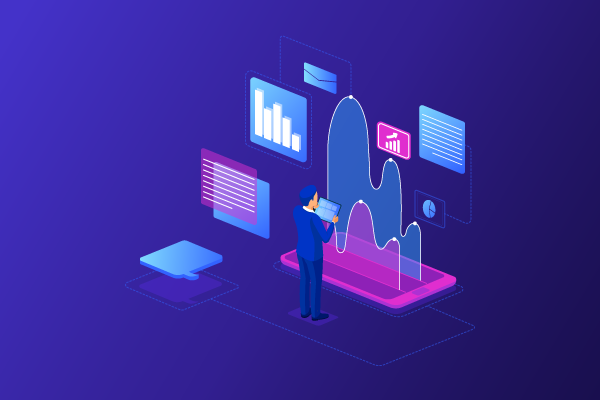In the intensely competitive market that exists today, businesses adopting cloud-native technologies to transform their infrastructure and applications are at an advantage and grow much more rapidly than their peers. However, before they migrate, it is crucial for businesses to identify the key business drivers for successful cloud migration.
Most organizations have similar goals when moving to the cloud: cost savings, IT system maintenance, adaptability, scalability, technology upgrades, performance, application improvement as a prerequisite for Digital Transformation, Business Continuity strategies, market advantages, future roadmaps, architectural changes, and others. In this article, let us look at five key business factors that we believe organizations should consider, before adopting cloud-native modernization and the tremendous benefits they can experience as a result.
1. Cost Efficiency
In terms of your CapEx and OpEx models, are you an organization with the ability to invest large CapEx expenditures to build up and modernize the Enterprise IT ecosystem, or are you a more run-on-revenue model where OpEx is more controllable than initial large spending? Cloud migration allows organizations to optimize their expenditure models by eliminating large capital expenditures (CapEx) and adopting pay-as-you-go services. This shift enables better budget management, resource utilization, and shorter approval processes. Departments gain decision-making authority, expenditure transparency increases, and operational costs become more controllable.
2. Complex Operational Challenges
The cloud holds the potential to provide customized solutions that accurately align with your specific technical and operational requirements. Assume your company is constantly expanding and has a peak and seasonal growth pattern that needs the use of a scalable, adaptive, and dependable system to manage workloads. And, your technological plan involves a shift from monolithic to microservices architecture. You have a centralizedIT operations team, yet there is no shared duty or accountability. There is no catastrophe recovery plan in place. There is a lack of flexibility and connected systems, making new service connections difficult. Enterprise security and vulnerabilities are addressed at a single level, affecting the whole infrastructure. There is no such thing as an on-demand feature or product deployment. The utilisation of resources and assets is difficult to control and monitor. Due to a lack of programmable APIs, the engineering team’s interoperability is a hurdle and yourlegacy apps are incompatible with current microservices. If your organization faces some or most of these challenges cloud computing is the only answer.
3. Business Agility
In the realm of business, agility plays a vital role in delivering key deliverables promptly without compromising quality. . In the agile world, a product or feature’s quick time-to-market is critical for unlocking market potential and earning customer satisfaction. Moreover, businesses must execute regulatory and compliance modifications within specified time limits. It is also important to enable engineering teams to develop scalable products with high quality and efficiency, allowing for rapid development and continuous process improvements based on productivity data. Engaging business owners throughout the development process, adapting to modifications on the go, and demonstrating products in frequent reviews are essential conditions for agile product development.
4. Technology Upgrades

Cloud solutions accelerates the design, testing, and deployment processes, regardless of future technology roadmaps or architectural modifications. Some key technology enablers include DevOps, Infrastructure-as–code(IaC), Software-as-a-Service (SaaS), Platform-as-a-Service(PaaS), and Infrastructure-as-a-Service (IaaS), AI-based solutions, monitoring and logging, Data center and Disaster Recovery (DC-DR), resiliency, platform and application performance, infrastructure optimizations, and digital transformation journeys.
5. Empowering Teams
Finally, how could the cloud improve the way people work in businesses? The Cloud offers cultural transformation as well as intellectual leadership. Cloud-based platforms and SaaS services foster increased collaboration enabling teams to develop, document, communicate, and interact more quickly and efficiently. Dev-Ops solutions enhance the speed and quality of product releases, giving businesses and product owners competitive advantages and helping them deliver more value to their consumers. Moreover, DevOps empowers engineering teams to develop software solutions that are in line with business needs. Robotic Process Automation (RPA) automates many manual tasks performed in daily routines, freeing individuals to take on more challenging roles in their professional paths. IT teams can optimize operational efficiency by utilizing decentralized and distributed monitoring systems that provide dashboards, data analytics, alerts, notifications, and subscriptions. In a cloud-enabled organization, each department is assigned responsibilities to plan, authorize, and manage its budgets, costs, resource utilization, and workloads eliminating the need for lengthy approval processes.
Conclusion
Cloud migration brings long-term benefits to organizations by addressing business barriers, technology challenges, operational inefficiencies, and cost optimizations. By understanding and leveraging the key business drivers for successful cloud migrations, organizations can plan and execute a successful migration approach.
Best of luck on your cloud journey! If you are interested in learning how Sensiple’s Cloud experts can assist you in streamlining your migration process and maximizing the benefits, please reach out to us at info@sensiple.com.
See Also:
Cloud Contact Center Automation
About the Author
 Ponnivalavan Chinnugoundar a Senior Delivery Manager at Sensiple, brings over 10 years of experience in Delivery and Program Management. With extensive experience in overseeing and successfully managing numerous cloud migration projects across diverse domains, including Banking, App Modernization, and Contact Centre, Ponnivalavan has played a pivotal role in driving Digital Transformation journeys for our customers. Leveraging his wealth of expertise and insights, he ensures seamless project execution and achieves desired outcomes.
Ponnivalavan Chinnugoundar a Senior Delivery Manager at Sensiple, brings over 10 years of experience in Delivery and Program Management. With extensive experience in overseeing and successfully managing numerous cloud migration projects across diverse domains, including Banking, App Modernization, and Contact Centre, Ponnivalavan has played a pivotal role in driving Digital Transformation journeys for our customers. Leveraging his wealth of expertise and insights, he ensures seamless project execution and achieves desired outcomes.



 (2 votes, average: 4.00 out of 5)
(2 votes, average: 4.00 out of 5)



